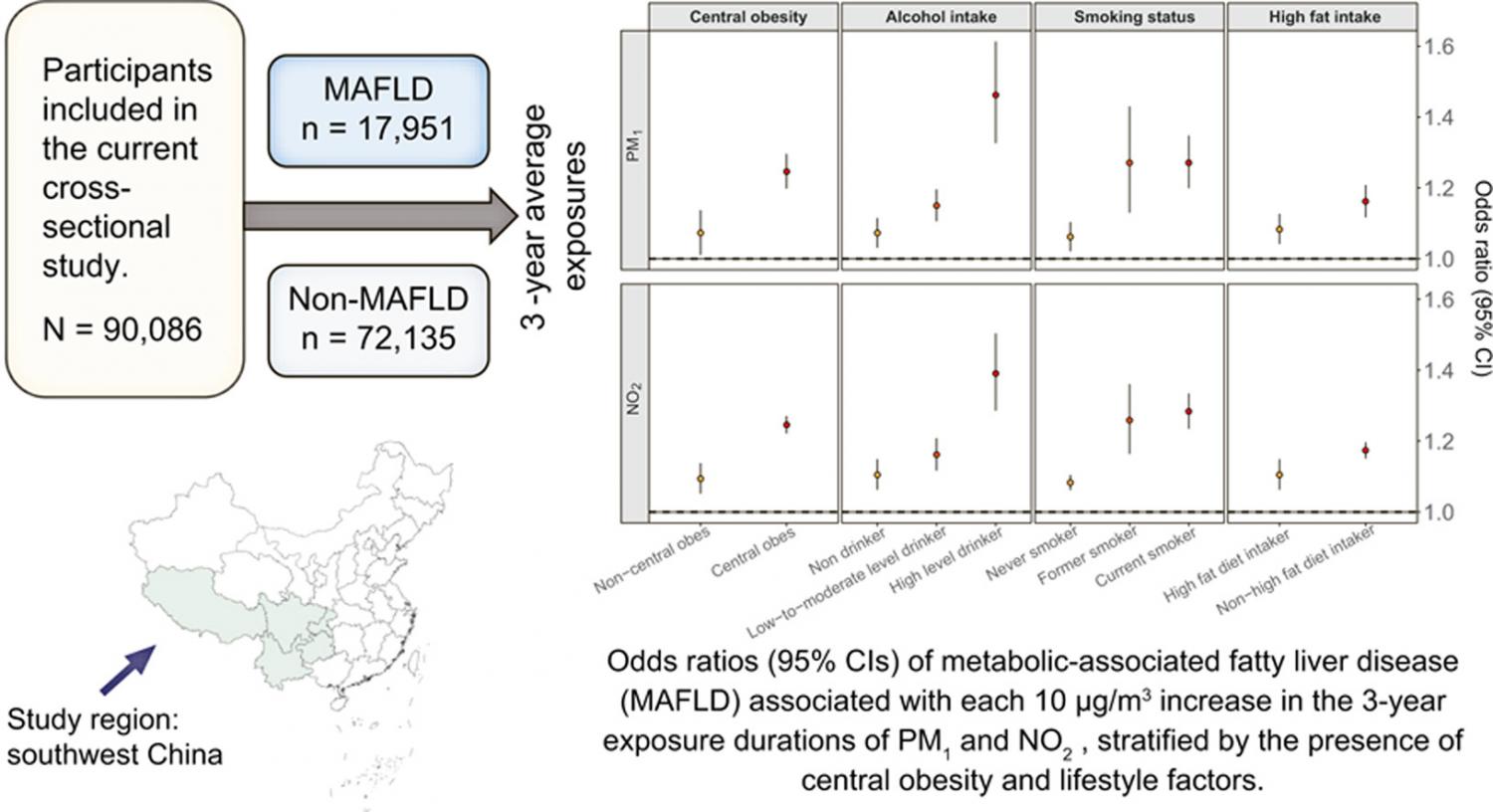
Elsevier, Journal of Hepatology, Volume 76, March 2022
Background & Aims: Accumulating animal studies have demonstrated the harmful contribution of ambient air pollution (AP) to metabolic dysfunction-associated fatty liver disease (MAFLD), but corresponding epidemiological evidence is limited. We examined the associations between long-term AP exposure and MAFLD prevalence in a Chinese population. Methods: We conducted a cross-sectional study of 90,086 participants recruited in China from 2018 to 2019. MAFLD was assessed based on radiologically diagnosed hepatic steatosis and the presence of overweight/obese status, diabetes mellitus, or metabolic dysregulation. Residence-specific levels of air pollutants, including particulate matter with aerodynamic diameters of ≤1 μm (PM1), ≤2.5 μm (PM2.5), and ≤10 μm (PM10), and nitrogen dioxide (NO2), were estimated by validated spatiotemporal models. We used logistic regression models to examine the AP–MAFLD associations and further evaluated potential effect modifications by demographics, lifestyle, central obesity, and diabetes status. Results: Increased exposure levels to all 4 air pollutants were significantly associated with increased odds of MAFLD, with odds ratios (ORs) of 1.13 (95% CI 1.10–1.17), 1.29 (1.25–1.34), 1.11 (1.09–1.14), and 1.15 (1.12–1.17) for each 10 μg/m3 increase in PM1, PM2.5, PM10, and NO2, respectively. Further stratified analyses revealed that individuals who are male, alcohol drinkers, and current and previous smokers, those who consume a high-fat diet, and those with central obesity experience more significant adverse effects from AP exposure than other individuals. Conclusions: This study provides evidence that long-term exposure to ambient PM1, PM2.5, PM10, and NO2 may increase the odds of MAFLD in the real world. These effects may be exacerbated by unhealthy lifestyle habits and central obesity. Lay summary: We conducted an epidemiological study on the potential effect of ambient air pollution on the risk of metabolic dysfunction-associated fatty liver disease (MAFLD) in approximately 90 thousand adults in China. We found that long-term exposure to ambient air pollution may increase the odds of MAFLD, especially in individuals who are male, smokers, and alcohol drinkers, those who consume a high-fat diet, and those with central obesity.
